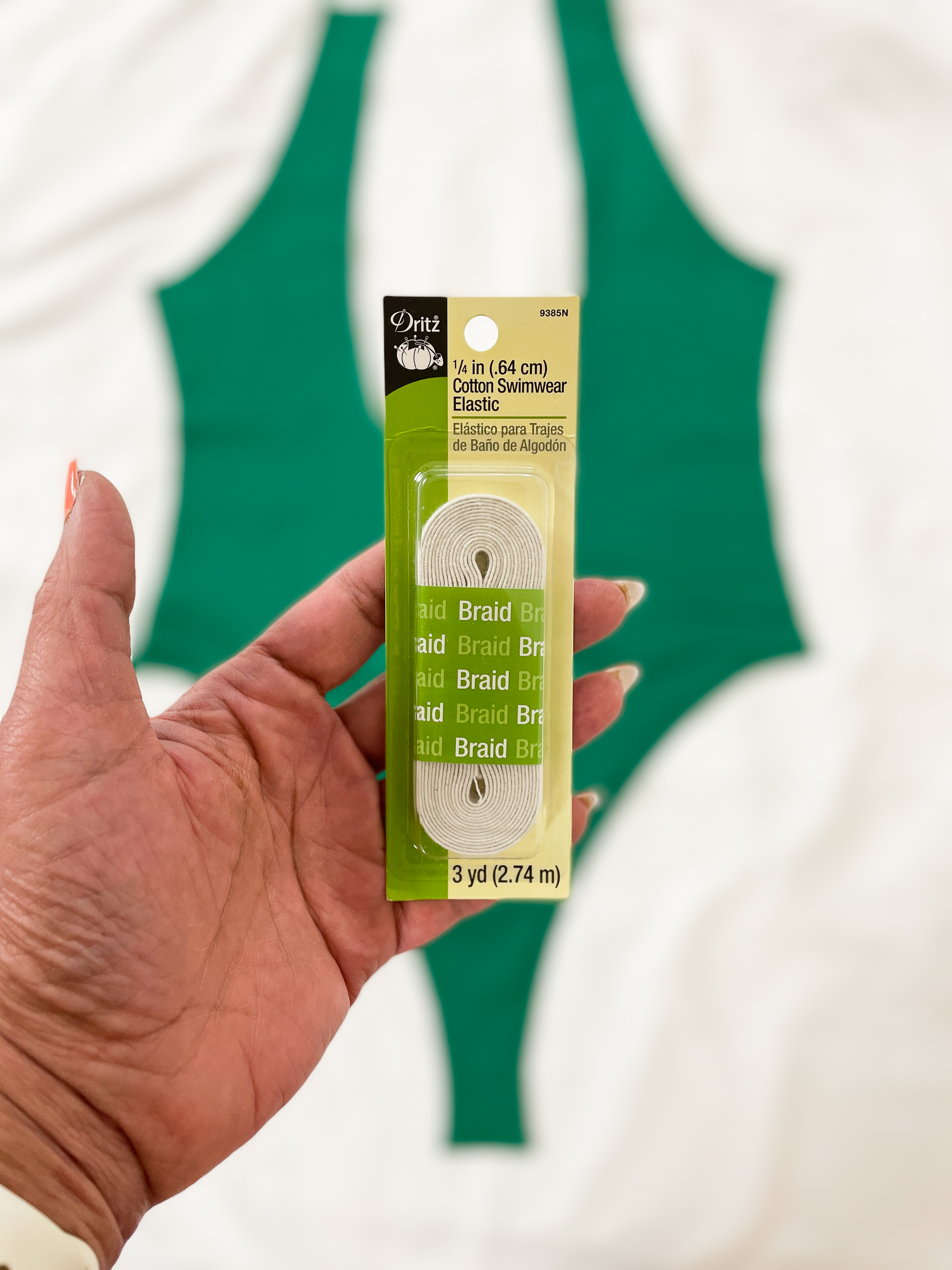Choose High-Quality Swimwear Fabric

When sewing swimwear, the most important thing is finding the right fabric. When selecting fabrics, you have to select high-quality swimwear fabric with four-way stretch of at least 50% in order to make your swimwear work. Luckily, we live in a wonderful time where we have access to many, many fabric retailers and we home sewists can purchase the same types and quality performance fabrics we see in ready to wear. You should seek out something that contains polyester, nylon, spandex and/or lycra with at least 8% spandex because these fabrics will have excellent stretch and recovery. Also, look for something that is soft and not rough or scratchy. It is important that the fabric feels good against your skin. Fiber content is everything! Your fabric must be able to stand against chlorine and salt water. The fabric I used is from Zelouf Fabrics. It’s the Power Sateen and it is 82% nylon and 18% spandex. When preparing to sew with your activewear fabric, make sure that you prewash your fabric. This will preshrink your fabric and prevent the fabric dye from bleeding as you are wearing it. Selecting the proper needle and thread is key.
Selecting Your Size
When selecting your pattern size, if you’re in between sizes it’s always best to go with the lower size. Unlike sewing a woven garment with no stretch, a swimsuit is meant to fit extremely close to your body. So, you can make it in your exact size or a little bit smaller – with negative ease and it will still fit. As with any sewing, I suggest buying extra fabric and to be prepared to sew your first swimsuit twice. Let the first time be you “muslin”.
Picking Swimsuit Lining
Don’t skip lining your swimsuit! You need that extra layer of protection because of how close a swimsuit fits to the body. You can choose swimsuit lining fabric that is 100% nylon or you can use swimsuit fabric. Using swimsuit fabric can also give you the opportunity to create a reversible design.

Use Swimwear Elastic
You make think that if your fabric has excellent stretch and recovery, why add elastic? Your fabric may
start out that way, but over time when it is exposed to chlorine and salt water, it could possible lose its
shape. Elastic is to help it maintain its shape. But you can’t just use regular polyester elastic. You have to
use swimwear elastic. You can’t cheat this by saying, this is what I have in my stash, so this is what I’m going to use. You’ll regret that!

Cutting Out Your Pattern
When cutting out your swimwear fabric, I suggest cutting using a single layer of fabric instead of cutting your fabric on the fold. Swimwear pieces are very small and they are just easier to cut on a single layer. And use pattern weights instead of pins. I prefer using large metal washers. And use a rotary cutter with a fresh blade.

Sewing Your Swimwear
As with any knit fabric, use a ball point or stretch needle. And use high-quality thread from reputable companies like Gutermann or Mettler. I like to use Mettler SERAFLEX® thread because it has stretch. And I love SERACOR® thread in my serger. All threads are not created equal. Using a low-quality thread or ever cotton will have you hearing popped seams. So your best bet is 100% polyester thread. When sewing your swimsuit, your primary machine will be your serger. But I highly suggest basting your suit first. A lot of swimsuit patterns, especially from indie pattern companies use small seam allowances like ¼”. This will give your more control with keeping your pieces together. I suggest using the longest stitch
your machine will allow for your basting. When sewing your elastic, we as home sewist have an undeniable urge to pull while sewing. Don’t do that here! You’re not gathering and you don’t want to end up with rippling seams. You want your seams to lay flat.

Do Not Press
This is the one time while sewing that you can skip the iron. Swimsuits don’t require pressing because of the type of fabric you’re using. Swimwear fabrics are made from some type of rubber or plastic types of fabric which don’t take heat well. If you’re concerned about your seams laying flat, you can always use a zigzag topstitch.
